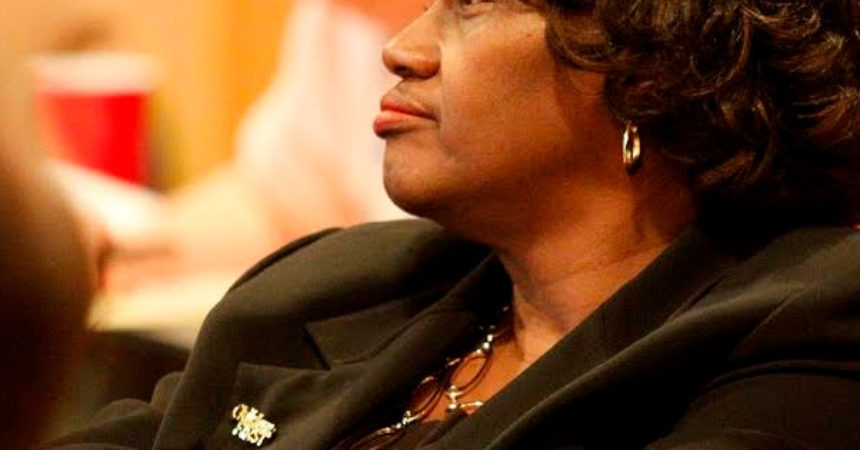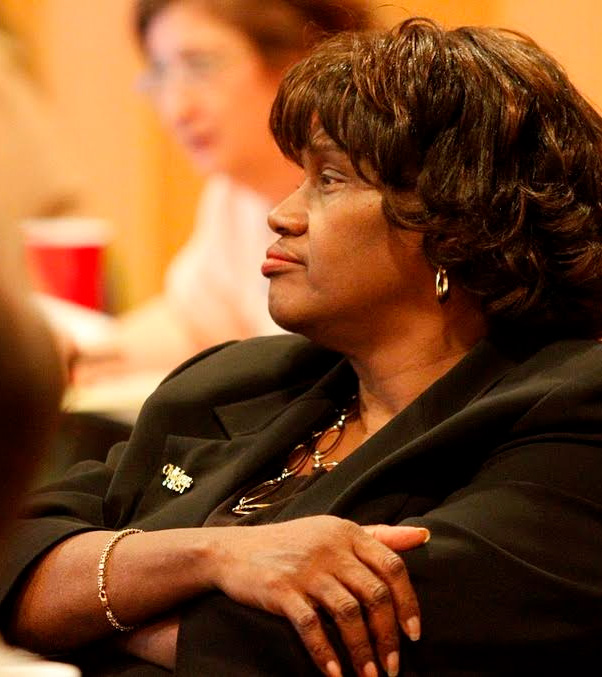
Racist or not; Confederate flag-waving at Chiles strikes a nerve

‘We want to make sure that the community knows that we take the safety of our students seriously.’ – Joy Bowen, chair of Leon County School Board.
Photo special to the Outlook
By St. Clair Murraine
Outlook staff writer
A debate over the recent display of confederate flags on the campus of Chiles High School has thrown Tallahassee head-first into the nation-wide conversation of whether the flag should be banned from public display.
While students and their parents seemingly are disturbed by the flag-waving incident, there is an obvious divide over individual rights. At the same time, opponents of the flag have been infuriated because of its ties to slavery.
The argument has escalated to the point that the Leon County School Board plans to take action, using the constitution as its guide, said Joy Bowen, chair of Leon County School Board. The matter was first discussed at Monday’s agenda meeting before it was brought to the full board meeting Tuesday.
“We want to make sure that the community knows that we take the safety of our students’ seriously,” Bowen said. “We want to make certain that people know we will be working within the constitution to make certain that all rights are addressed.”
A clash of students’ safety and their right to free speech, began with opposing petitions posted on the internet. Days later, a group of students showed up with Confederate flags waving from the back of their trucks in the school’s parking lot.
That was followed by an anonymous email that led to parents keeping several students at home. Later a 14-year old Chiles student was arrested and charged with five counts of felony criminal mischief for damaging cars with a screwdriver.
On the same day that the student was arrested, the media was banned from the campus. However, students who spoke to reporters outside the gates said they were perplexed because of what the flag represents to those waving them and the hurt it causes Black students.
“I think what’s behind all this is some people think they are better than others,” said senior Jacob Paterson, who is White. “Opinions vary with that. Everybody has to try to listen to each other’s opinion and not try to get offended by it.”
Bowen suggested that what transpired at Chiles could be a case of students copying what they’ve seen in reports of similar cases in bigger cities.
“Most of us are acting out the behaviors we have seen by larger communities,” Bowen said. “So the education institution is supposed to help determine those behaviors that would best fit within society as good citizens.”
Debates over what the Confederate flag actually represents have had proponents and opponents dating back to the four-year Civil War between Southern and Northern states in the 1800s. Politicians in the South formed the Confederate and south wanted secede from the Union over their rights to own slaves. The Northern states, which eventually won the war, pushed to end slavery.
While President Abraham Lincoln made the case for the northern against, Alexander H. Stephens, the Confederate states’ vice president at the time, used what is known as his “Cornerstone Speech” to argue for slavery to continue.
Historians have found that Stephens was steadfast for slavery when he gave the famous speech on March 21, 1861. In it he said: “Our new government is founded upon . . . its foundations are laid, its corner-stone rests, upon the great truth that the Negro is not equal to the White man; that slavery – subordination to the superior race – is his natural and normal condition.”
Those words seemingly are at the heart of the debate over the flag and what those aligned to White supremacist practice. Recent calls for removing the flag from public display has been on the increase since self-proclaimed White supremacist Dylann Roof killed nine Black church members in South Carolina in 2015.
A tape of Roof’s confession to FBI agents was played during his trial.
“I just finally decided that I had to do it,” Roof, 22 at the time, told the FBI. “The fact of the matter is what I did is so minuscule to what Black people are doing to White people every day.”
Whether the students who waved Confederate flags at Chiles High School were putting on a racist demonstration is one question being asked by other students and parents. A week later, it still isn’t clear how school administrators will address the issue.
However, the incident struck a nerve with Rocky Hanna, Leon County superintendent of schools.
“Your rights end when they interfere with someone else’s right,” Hanna said during a television interview. “I have zero tolerance for harassment or bullying behaviors. Unfortunately we have reached the level of these kids going back and forth and those students crossed the line.”







